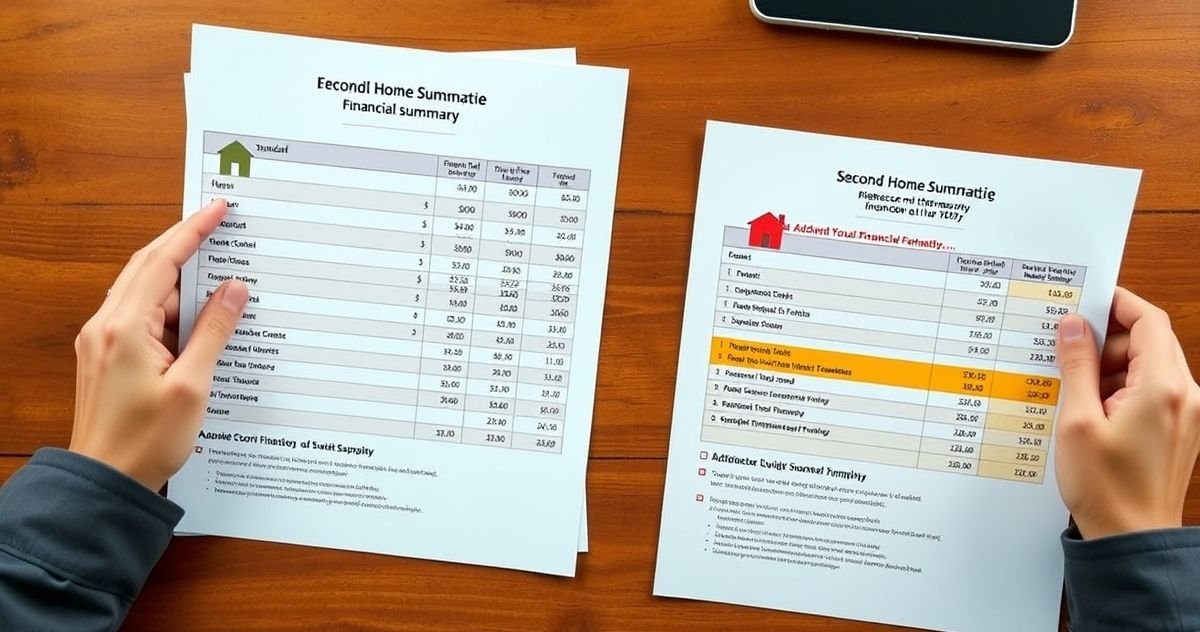Buying a second home—whether a vacation getaway or weekend retreat—requires navigating distinct financing rules compared to a primary residence. Lenders view second home loans as higher risk because these properties are luxuries that borrowers may prioritize less in financial hardships. To minimize risk, lenders enforce specific guidelines tailored to these loans.
Key Second Home Financing Guidelines
Down Payment: Expect to put down at least 10%—often 20% or more to avoid private mortgage insurance (PMI). Larger down payments demonstrate financial commitment and reduce lender risk. For more details on PMI, see Private Mortgage Insurance (PMI).
Credit Score: Most lenders require a minimum FICO score of 680, with 700+ preferred to qualify for better rates and terms.
Debt-to-Income Ratio (DTI): Your total monthly debt payments, including the new mortgage, typically must not exceed 43% of your gross income. A lower DTI indicates manageable cash flow. Learn more about this in our Debt-To-Income Ratio guide.
Financial Reserves: Lenders usually ask for 2 to 6 months of mortgage payments saved in accessible accounts after closing costs and down payment. This fund acts as a buffer for unexpected job loss or expenses.
Occupancy Rules: The property must be a one-unit dwelling used primarily by you for personal enjoyment part of the year—not a full-time rental. According to Fannie Mae standards, second homes can be rented short-term but not managed as investment properties. More on occupancy is available in our Investment Property Mortgage article.
Differences Between Second Homes and Investment Properties
| Feature | Second Home | Investment Property |
|---|---|---|
| Primary Purpose | Personal use and enjoyment | To generate rental income |
| Down Payment | Minimum 10%, often 20% | Usually 20-25% or higher |
| Interest Rates | Slightly higher than primary home | Generally higher than second homes |
| Occupancy | Owner occupies part of the year | No personal occupancy; rented out |
| Rental Income Usage | Usually not counted to qualify | Often counted toward qualification |
Tips for Successful Second Home Financing
- Improve Your Credit: Check reports for errors and pay down debts to boost your FICO score.
- Reduce DTI: Lower monthly obligations by paying off loans and credit cards.
- Save for Reserves: Plan for a substantial down payment and emergency cash reserves.
- Get Pre-Approved: Know your budget and strengthen your position with sellers.
- Compare Lenders: Shop around for the best rates and terms.
Down Payment Gifts
Gift funds are commonly accepted when buying a second home but require a gift letter confirming the money is not a loan. More about this in our Mortgage Gift Funds entry.
Conclusion
Understanding second home financing guidelines prepares you to meet lender expectations and secure your vacation property financing. These rules protect both the borrower and lender by ensuring financial readiness and reducing risk.
For official guidelines, review Fannie Mae’s Selling Guide Section B2-1.1-01 and IRS resources.
Further reading:
- Debt-To-Income Ratio
- Private Mortgage Insurance (PMI)
- Mortgage Gift Funds
- Investment Property Mortgage
Sources:
- Investopedia, “How To Get A Mortgage For A Second Home”
- NerdWallet, “How to Buy a Second Home”

